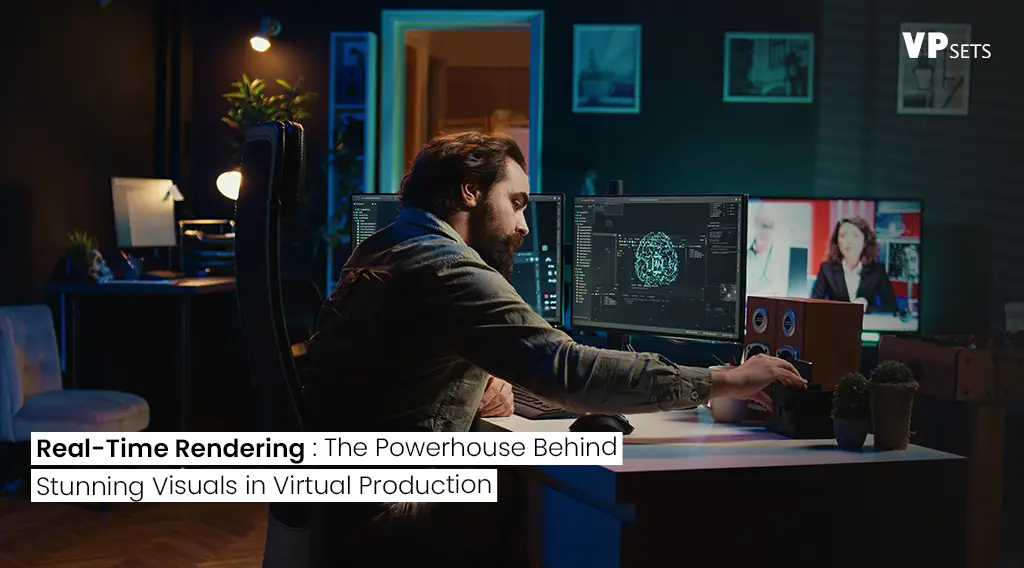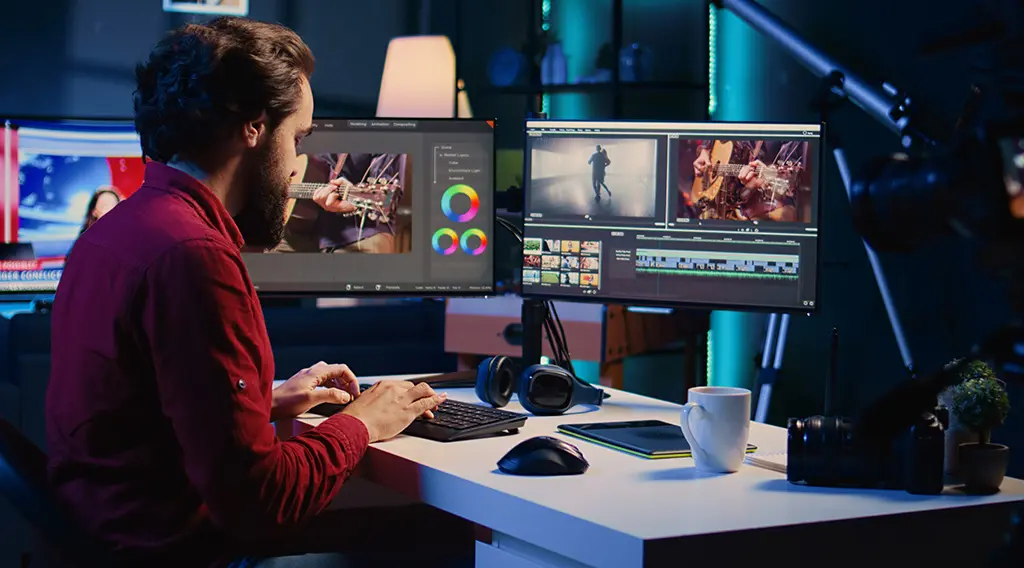Real-Time Rendering: The Powerhouse Behind Stunning Visuals in Virtual Production

In the ever-evolving world of entertainment, the demand for more immersive and visually stunning experiences continues to push the boundaries of technology. One of the most significant advancements fueling this revolution is real-time rendering.
The magic behind the breathtaking visuals on virtual production stages, and real-time rendering is reshaping how movies, TV shows, and even live events are created, leaving a lasting impact on the industry.
What is Real-Time Rendering?
Real-time rendering refers to the process of generating images and graphics at high speeds, typically in fractions of a second. Unlike traditional rendering methods, which might take hours or even days to produce a single frame, real-time rendering allows for immediate visual feedback.
This technology is the backbone of many modern applications, from video games to architectural visualization, and now, increasingly, in the realm of virtual production.
The Role of Real-Time Rendering in Virtual Production
Virtual production has emerged as a game-changer in the entertainment industry, blending physical and digital worlds to create seamless storytelling experiences. At the heart of this innovation is real-time rendering, which enables filmmakers to visualise scenes on virtual sets in real time, allowing for greater creative flexibility and efficiency. In traditional filmmaking, directors and cinematographers would often have to wait for days to see the visual effects integrated into their shots. Real-time rendering eliminates this delay by displaying the digital assets instantly, right on the set.
This not only speeds up the production process but also empowers creative teams to make changes on the fly, enhancing storytelling without the need for costly reshoots.
The Technology Behind Real-Time Rendering
Real-time rendering relies heavily on graphics processing units (GPUs) and sophisticated software like Unreal Engine and Unity. These tools leverage powerful algorithms and cutting-edge hardware to generate high-quality visuals in milliseconds.
The use of ray tracing and global illumination techniques in real-time rendering further enhances the realism of virtual environments, creating stunning light and shadow effects that mimic the natural world.
The rise of LED volumes and large-scale screens that display real-time rendered backgrounds have also revolutionized how virtual sets are created. With these LED screens, filmmakers can simulate various environments on set, eliminating the need to travel to multiple locations or rely entirely on green screens.
This combination of real-time rendering and LED technology brings a new level of immersion, blurring the line between the physical and digital worlds.

Impact on the Entertainment Industry
The impact of real-time rendering on the entertainment industry has been profound. Here are a few key areas where it has made a significant difference:
1. Faster Production Timelines: Real-time rendering drastically reduces the time it takes to produce visual effects, allowing for quicker project turnarounds. This acceleration is crucial in an industry where time is money and deadlines are often tight.
2. Enhanced Creativity: Directors, producers, and artists now have the freedom to experiment with different visuals and effects on the spot. The ability to see immediate results opens up new creative possibilities, leading to more innovative storytelling.
3. Cost Efficiency: By minimizing the need for reshoots and reducing reliance on physical sets, real-time rendering can lead to significant cost savings. Virtual production enables teams to do more with less, maximizing resources without compromising on quality.
4. Immersive Audience Experiences: The level of detail and realism achieved through real-time rendering makes content more engaging and immersive for audiences. Whether it's a sci-fi world or a fantastical landscape, viewers are transported into these virtual realms, making their experience more captivating and believable.
Revolutionizing Visual Storytelling
Real-time rendering, combined with virtual production sets, has revolutionized production techniques and storytelling. It empowers creators to expand the limits of imagination, bringing to life worlds that once seemed impossible to visualize.
The seamless integration of computer-generated imagery (CGI) with live-action footage means that filmmakers can now build expansive universes without the constraints of physical locations or time.
The use of this technology has also democratized content creation, making high-quality production tools more accessible to smaller studios and independent creators. What once required a massive budget and a large crew can now be achieved with fewer resources, opening up opportunities for fresh voices and diverse stories in the entertainment industry.
The Future of Real-Time Rendering in Virtual Production
As technology continues to advance, the potential for real-time rendering in virtual production is limitless. Innovations like artificial intelligence (AI) and machine learning are already being integrated into rendering processes, optimizing workflows, and further enhancing visual quality.
We can expect to see even more realistic environments, interactive storytelling, and the blurring of boundaries between gaming and cinematic experiences.
Additionally, the rise of augmented reality (AR) and virtual reality (VR) will continue to push the envelope, creating fully immersive worlds that audiences can explore in real time.
These developments will shape the future of entertainment, transforming how we consume and engage with media content.
Conclusion
Real-time rendering has emerged as the powerhouse behind the stunning visuals on virtual production stages, revolutionizing the entertainment industry and setting new standards for creativity and innovation.
By enabling immediate visual feedback, enhancing realism, and reducing production costs, this technology is changing the way stories are told and experienced worldwide.
As we move forward, the role of real-time rendering in virtual production will only grow more prominent, paving the way for more immersive and interactive experiences that captivate audiences across the globe.
